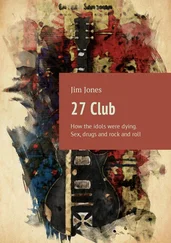Thus, when on the night of 7 December 1811 a twenty-four-year-old hosier named Timothy Marr, his wife, their baby and a fourteen-year-old apprentice were all found brutally murdered in their shop on the Ratcliffe Highway in the East End of London, the cosy feeling evaporated rapidly. The year 1811 had not been kind to the working classes. The French wars had been running endlessly, and with Waterloo four years in the future, there was no sense that peace – and with it prosperity – would ever return. Instead hunger was ever-present: the wars and bad harvests had savagely driven up the price of bread. In the early 1790s wheat had cost between 48s. and 58s. a quarter; in 1800 it was 113s.
The murder of the Marrs, however, was more dramatic than the slow deaths of so many from hunger, or the faraway deaths of soldiers and sailors in unending war, and the story was soon everywhere. The Ratcliffe Highway was a busy, populous working-class street in a busy, populous working-class area near the docks. At around midnight on the evening of his death, Marr was ready to shut up shop. (Working-class shops regularly stayed open until after ten, to serve their clientele on their way home after their fourteen-hour workdays. On Saturdays, pay day, many shops closed after midnight.) The hosier sent his servant, Margaret Jewell, to pay an outstanding bill at the baker’s, and to buy the family supper. After paying the bill she looked for an oyster stall. Oysters were a common supper food, being cheap, on sale at street stalls and needing no cooking. The first stall she came to had shut up for the night, and looking for another she lost her bearings – before gas lighting streets had only the occasional oil lamp in a window to guide passers-by – and was away for longer than expected, returning around 1 a.m. *She knocked; knocked again. She heard scuffling, someone breathing on the other side of the door, but no one opened it. She stopped the parish watchman on his rounds, telling him she knew the Marrs were in, she had even heard them, but no one was answering the door. He had passed by earlier, he said, and had tapped on the window to tell Marr that one of his shutters was loose. A man had called out, ‘We know it!’ Now he wondered who had spoken.
Their talking attracted the attention of Marr’s next-door neighbour, a pawnbroker. From his window he could see that the Marrs’ back door was open. With the encouragement of the neighbours and the watchman, he climbed the fence between the houses and entered (some reports say it was the watchman who entered). Whichever man it was, once inside he found a scene from a horror film. Marr and his apprentice were lying in the shop, battered to death. The apprentice had been attacked so ferociously that fragments of his brains were later found on the ceiling. Blood was everywhere. Mrs Marr was lying dead halfway to the door leading downstairs. The pawnbroker staggered to the front door, shouting, ‘Murder – murder has been done!’ and the watchman swung his rattle to summon help. Soon an officer from the Thames Division Police Office appeared. Meanwhile Margaret Jewell rushed in with a group of excited bystanders, looking for the baby. They found him lying in his cradle in the kitchen, his throat cut. Some money was scattered on the shop counter, but £150 Marr had tucked away was untouched. On the counter lay an iron ripping chisel, which seemed not to have been used; in the kitchen, covered with blood and hair, was a ship’s carpenter’s peen maul – a hammer with sharpened ends. A razor or knife must have been used on the baby, but none was found. Outside the back door were two sets of bloody footprints, and a babble of voices reported that a couple of men, maybe more, no one was quite sure, had been seen running away from the general direction of the Marrs’ house at more or less the right time.
In the morning, a magistrate from the Thames Division Police Office took over the case. An officer from the Thames Division Police Office had responded the night before, and therefore the magistrates at the Thames Office were now in charge. A magistrate ordered the printing of handbills offering a reward, and visited the site of the murder, where the bodies lay where they had fallen the night before.
He was not the only one. What might be termed murder-sightseeing was a popular pastime, and many went ‘from curiosity to examine the premises’, where they entered ‘and saw the dead bodies’. Inquests were held as quickly as possible after the event, usually at a public house or tavern near the scene of the crime. The bodies were left in situ for the jury to view. Until they had been, visitors traipsed through the gore-spattered rooms, peering not only at the blood splashes and other grisly reminders of the atrocity, but also at the bodies themselves.
For those who wanted a tangible souvenir, there were always broadsides, which were swiftly on sale on street corners. Broadsides had been around since the sixteenth century, but modern technology made their production easier, cheaper and quicker, and their distribution more widespread. A typical broadside was a single sheet, printed on one side, which was sold on the street for ½d. or 1d. Broadsides had their heyday before the 1850s, when newspapers were expensive. Most commonly, sheets were produced sequentially for each crime that caught the public’s imagination: the first report of the crime, with further details as they were revealed; the magistrates’ court hearing after an arrest; then the trial; and finally, and most profitably, a ‘sorrowful lamentation’ and ‘last confession’, usually combined with a description of the execution. These ‘lamentations’ and execution details were almost always entirely fabricated for commercial reasons: they found their readiest sale at the gallows, while the body was still swaying. For those who could not find a penny, pubs and coffee houses pinned up broadsides of popular crimes, to be read by customers as they drank. Other broadsides appeared in shop windows, frequently attracting crowds of bloodthirsty children.
One broadside, published before the Marrs’ inquest, which opened three days after the murders, reported that ‘the perpetrators are foreigners’, which could have done little to reassure readers in this dockyard area of town, filled with sailors from across the world. Another spent less time on the possible murderer, and more on the gory details and the rumours that were prevalent: that Mrs Marr had, several months before, discharged a servant for theft. ‘Words arose, when the accused girl is said to have held out a threat of murder. Mrs. Marr … gently rebuked her for using such language’; later Mrs Marr ‘remonstrated with her on her loose character and hasty temper’. Anyone with a penny to spare would get a fair idea of the crime and the latest news of the search for the murderer.
Those with a few more pennies could buy a pamphlet on the subject. These were available nearly as swiftly as the broadsides. One covered all the details of the inquest, so it was probably on sale within five days of the deaths. While the pamphlets looked more substantial at eight pages, much of their information was identical to that in the broadsides. In some, such similar wording is used that either they must have shared an author, or one was copied from the other. Mrs Marr again sacks her servant, who ‘is said to have held out a threat of murder. Mrs. Marr … gently rebuked her for using such language’; later she again ‘remonstrated with her on her loose character and hasty temper’. Now, however, we get the additional detail that the servant was leading a ‘prostituted life’. This is reinforced by a description of her clothes: ‘a white gown, black velvet spencer [jacket], cottage bonnet with a small feather, and shoes with Grecian ties’. No servant could afford such fashionable items: they were signs that her money was earned immorally.
Читать дальше












